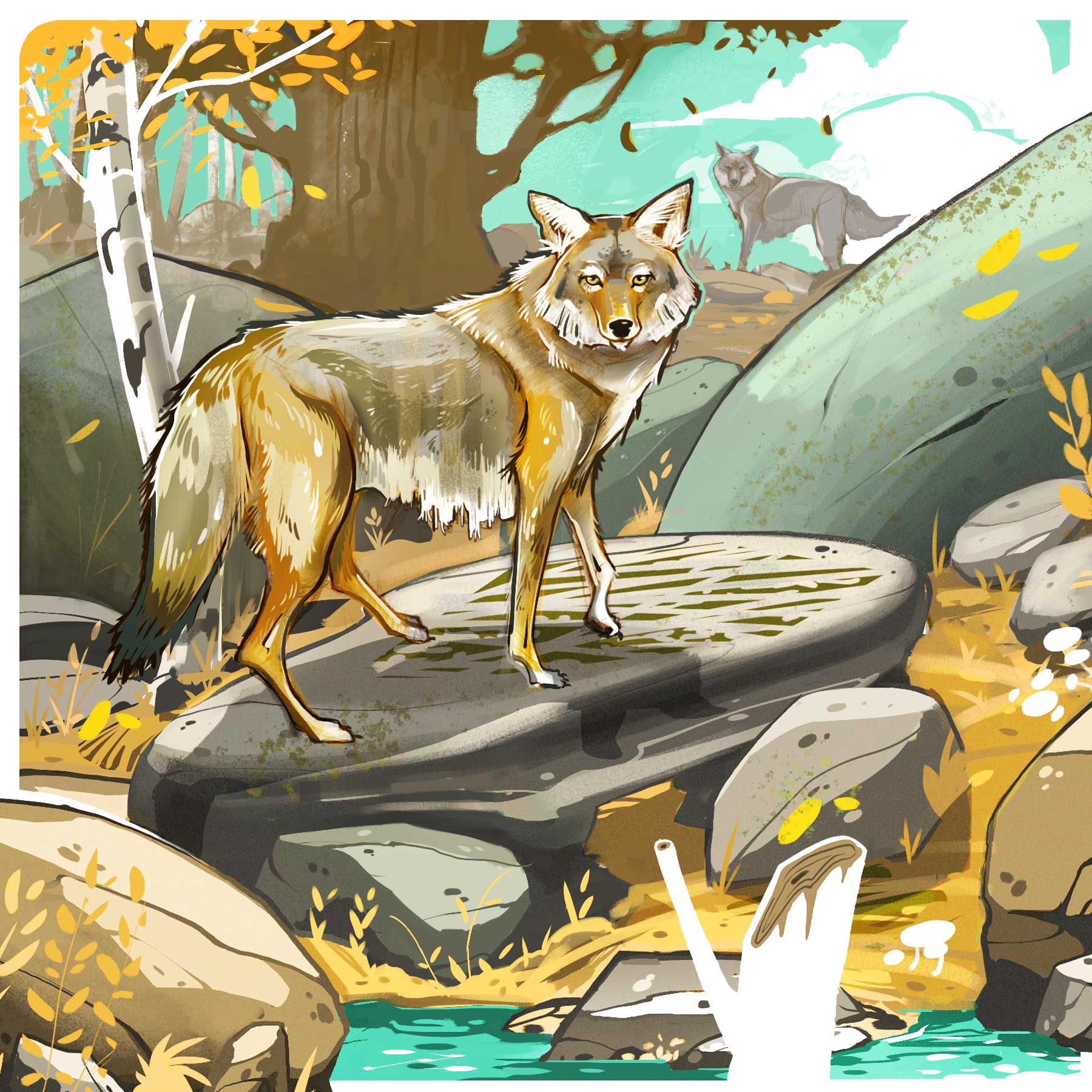One autumn evening, while I was sitting on a stump glassing a recently logged cutblock for deer, a mottled grey “dog” trotted out from the forest edge and sat only six metres away from me. The wind was right, and I stayed still so this animal was not aware that I was there. I got to watch a solo concert, barking and yipping that progressed to a full, chin-up howl. Then came a similar response from across the valley. Part way through the aria, though, the wind shifted or I moved a bit, and the soloist became aware of me, choked off the next call in mid-yip and darted away into the forest.
Advertisement

Coyotes (Canis latrans) are medium-sized, dog-like animals resembling a small German shepherd, larger than a fox but smaller than a wolf. Adults weigh between 10 kilograms and 15 kilograms, with males usually larger than females. Coyotes have a slender body, a narrow and pointed face and a long, bushy tail. Their coat colour is mostly a mix of grey and buff, with a white belly and, depending on the subspecies, varying amounts of black highlights on their sides and back, and a black tip on their tail.
The scientific name for coyote, Canis latrans, translates from Latin as “barking dog,” but that is really a weak description of their vocal prowess. They are sometimes called “song dogs” because of the impressive vocalizations, ranging from whines to growls to barks and howls. Up to a dozen different types of calls have been classified, and each has a meaning to other coyotes nearby, such as alarm, anger, affection or lust. Sometimes a number of coyotes get together for a group howl to the evening sky. If there are other coyote groups nearby, that howl can be answered and then repeated, group to group, up and down the valley.
Advertisement
Coyote-like animals have been around for the past five million years or so, with modern coyotes appearing in the fossil record in North America about one million years ago. Coyotes were originally a species of the grasslands and dry forests of western North America, but they are amazingly adaptable animals. Human activities, particularly since European settlement, have changed the natural world and coyotes have benefitted. Almost everything we do on the land, from logging to farming to dumping garbage, produces potential coyote food. Also, centuries of wolf control removed a major natural coyote predator. Coyotes are now found right across the continent and from the Arctic Circle to the Panama Canal. In 1980, they reached Prince Edward Island and Newfoundland when a cold winter created an ice bridge connecting these islands to the mainland. Dogs, wolves and coyotes are close enough genetically that they can interbreed, resulting in the “coy-wolves” of eastern North America. However, these are three separate species and most often breed with their own kind, viewing the other two as potential predators or potential food.
In BC, coyotes are found everywhere except Vancouver Island and some of the coastal islands and inlets. Coyotes are native to interior BC, but in the past 40 years have moved into Vancouver, where the estimated coyote population is now about 3,000. Two subspecies are recognized in BC, C.l. incolatus, found north of Williams Lake, and C.l. lestes from Williams Lake to the US border. The two subspecies are similar in size, but the southern animals have much darker coats.
Advertisement
Coyotes are carnivores and mostly eat small mammals. Mice are a key food item, but rats, rabbits and squirrels are regularly on the menu. These are opportunistic animals though, and they will eat almost anything they can catch, including young deer, birds, snakes, insects, as well as carrion and fruit. Human settlement can provide more exotic coyote dining pleasures, such as small livestock and domestic pets, as well as our garbage.
In addition to snatching cats and small dogs, very occasionally coyotes cross the line and not just tolerate us humans, but they view us as potential food. A healthy coyote avoids close human contact, but a sick, injured or starving animal can be dangerous, as can a coyote that has lost its natural wariness of humans through intentional feeding. Fortunately, coyote attacks are very rare considering how closely we live together. Some coyote “attacks” happen when a pet owner is bitten while trying to rescue their pet cat or dog.
Like most wild animals, coyotes need not be feared, but they are opportunistic predators and these wild song dogs deserve respect.